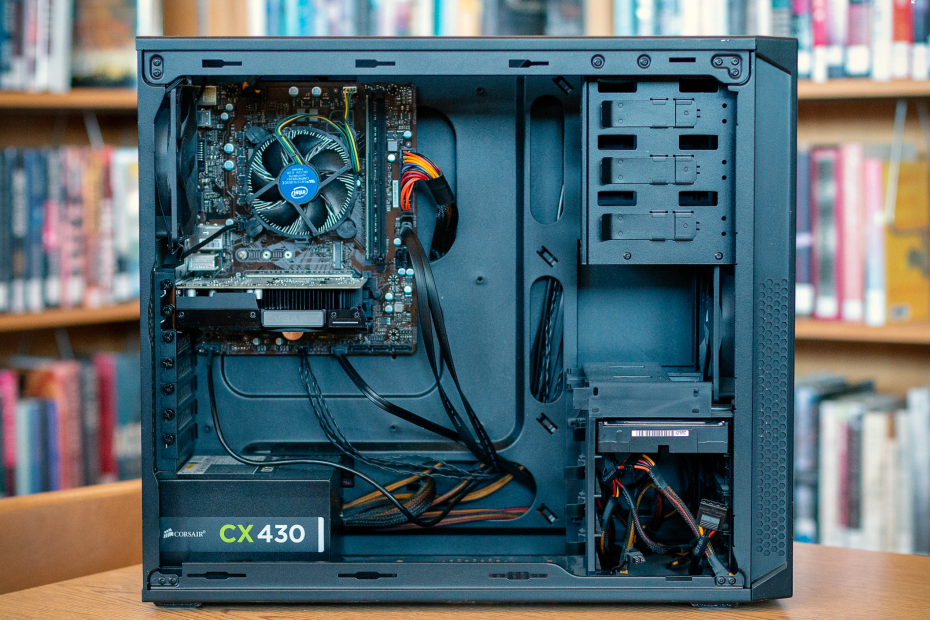My experience using a high-performance workstation PC (that I built) for 120 days

I set out to replace and build a new high-performance workstation as my daily driver in July. It has now been about four months (or 120 days) since the build was completed, and I thought it would be fun to take a look at how the workstation has performed during this time.
As a reminder, I wrote a two-piece guide with part 1 about the planning process and part 2 about the building process.
The PC I built is an AMD Ryzen 9 3900X (12 cores, 24 threads) machine, with 32 GB of RAM, 2 * 1 TB NVMe SSD, and an all-in-one liquid cooling solution. I use it for about 6-8 hours each workday.
Has it worked well?
Yes! It’s been amazing. I’ve had zero glitches with it. As I repurposed my old workstation to a dedicated server, the need to have the new machine running 24 hours a day went away. The workstation goes to deep sleep after an hour of inactivity, and it resumes in just 2-3 seconds. The server stays on at all times.
Performance is great. Everything is snappy. At times, Windows 10’s menu and window animations imply that something is taking longer than a millisecond, even if the OS is waiting to do its duties. One of the things I did upgrade was to add more RAM. I initially went with 32 GB of RAM (2 * 16 GB sticks), and I upgraded that almost immediately to 64 GB (thus, 4 * 16 GB). Why? I started hitting a continuous use of 20-25 GB of RAM, and I wanted to have more capacity – just in case.
Now I’m usually utilizing about 30 GB of RAM and have less to worry about. I run 2-3 virtual machines, a few Docker containers, Windows Subsystem for Linux 2, and keep all the Microsoft Edge (Chromium-based) tabs open I will ever need. Quite often, I start viewing a webinar or a video report and just leave those tabs open in pause until I can resume them at a later time. At the moment, I have about 150 tabs open.
What would I change, if anything?
A few months after I’d completed my build, the new AMD Zen 3-based CPUs were announced. The equivalent to my 3900X would be the 5900X – it’s about 20 % more expensive, though. I could have waited to get a more recent CPU for my build – but after more than four months of working with the PC, I’m thrilled with the performance. Once I hit – or if I ever hit – the performance ceiling on this, I know now there is room for an upgrade!
Another thing is the NVMe SSD. I opted for two separate 1 TB drives. The main drive is about 70 % filled, while the second one is mostly idling, with just 50 GB of content. I could have saved massively by not getting the second drive at all. But again, I’m more at peace now that I don’t have to worry about it. I also offload all of my VMs to the second, mostly idle, drive.
Special highlights
The all-in-one liquid cooling solution from Kraken was a mystery to me. I’ve never had one, so I was a bit hesitant to try it out initially. It turned out to be a great solution! It’s silent and just worry-free. I also feel the temps are kept at bay without giving it a second thought.
There are RGB lights on the memory sticks, and the liquid cooling device. I’m thankful that the vendors have made it possible to just turn them all off. I sometimes see people posting pictures of their PCs with prominent lights. Keeping my PC on the floor, out of sight, makes it look cleaner when it’s pitch black and indiscernible.
In closing
Overall, I’m immensely happy with my choices. As it often turns out, once you invest into something that you really feel is useful and needed, you feel the cost of the purchase is right.
I’m still using the old PC daily, but as it’s not in a desktop PC anymore, the age does not show similarly when used as a server.